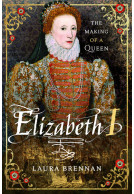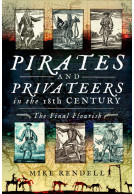James II & VII (ePub)
Britain's Last Catholic King
Imprint: Pen & Sword History
File Size: 18.3 MB (.epub)
Pages: 192
ISBN: 9781399012591
Published: 12th May 2023
| Other formats available - Buy the Hardback and get the eBook for £1.99! | Price |
|---|---|
| James II & VII Hardback Add to Basket | £22.00 |
James II & VII was not born to be a king. As the Duke of York he grew up in a Britain divided by civil wars and witnessed big events in British history including the Battle of Edgehill (1642).
After the execution of his father Charles I at the hands of the Parliamentarians, James soldiered in Europe until his brother, Charles II was restored to the crowns of Britain.
Under his brother's reign, James converted to Catholicism and subsequently became the heart of several political storms until 1681.
Upon inheriting the throne from his brother Charles II, in 1685, James struggled to balance his personal faith and the evolving politics of the time, upsetting courtiers, his parliament and his subjects eventually leading to the Glorious Revolution and him losing his throne in 1688.
This book examines the politics and events of James' life, both before and during his reign, to explain why he was unable to maintain the thrones of Britain, as well as the last few years of his life in exile, how he tried to regain the throne and his sad death.
Often overlooked as just a king who ruled for less than four years, James II & VII was an accidental but key historical figure in the shaping of British history. The events at the end of his reign were the first steps in creating a better constitution and democratic Britain.
Rating: 5 out of 5 stars
NetGalley, Heather Michael
I was very excited to read this book. I didn't know much about them so this was a great read and full of information! If you are into history you would should check this out!
Deftly organized into two main sections (The Duke of York: 1633-1685) and James II & VII & The Exile years: 1685-1701), and informative enhanced for the reader with the inclusion of a four page Bibliography and a six page Index, "James II & VII: Britain's Last Catholic King" is an impressive work of original and definitive historical research and an especially welcome addition to personal, professional, community, college and university library British Royal History/Biography collections and supplemental curriculum studies lists. It should be noted for students, academia, and non-specialist general readers with an interest in the subject that "James II & VII: Britain's Last Catholic King" is also available in a digital book format.
Midwest Book Review
Read the full review here
Rating: 5 out of 5 stars
NetGalley, Emma Potter
A very sensitive biography that looks at an often overlooked monarch.
Laura does a fantastic job at writing about James as a complicated man with feelings and convictions, rather than just a bad monarch.
People too often consider the actions of the monarchy, but not their feelings and go away without a real understanding.
I would highly recommend reading this to give you a rounded view of a very complex man.
In James II and VII, Laura Brennan explores the life of the last Stuart king before, during, and after his reign. Succeeding his brother Charles II, James II lived as the “spare” for most of his life until his brother had no legitimate male heirs. While on the throne, James II and VII struggled with maintaining the balance between Protestantism and Catholicism in England and Scotland, eventually being deposed by his daughter Mary and son-in-law William of Orange in 1689. Brennan’s use of specific historical terms (such as the 1689 change in power known as the Glorious Revolution) and her inclusion of specific events such as the Civil War and the Interregnum reflects her clear knowledge and familiarity with the period. Brennan’s focus on the various political and social challenges in the period reflects her passion for the topic and her devotion to exploring the life of an English monarch primarily known for his failure as a monarch and dethroning. Brennan’s use of detailed and contemporary historical documents and sources adds to the descriptions and in-depth information throughout the book, creating a strong picture of the last Catholic monarch in England in her latest book.
NetGalley, Lily Amidon
I recommend this for anyone interested in this era, or English monarchs, generally.
NetGalley, Lisa Sanderson
I would definitely recommend if you are a Stuart lover or a novice to the subject.
NetGalley, Shana Needham
Sharing a birthday with James II of England and James VII of Scotland, and having studied this monarch at university, this biography published by Pen & Sword Books is an easy introduction to a fascinating individual in British History. James was a victim of circumstance, living both in his father’s shadow in trying to impose a stronger (more absolute) monarchy whilst struggling with Parliament, and his brother’s shadow as a loyal supporter of Charles II as he tried to re-establish his vision of monarchy after the English Civil War and Interregnum period. This involved juggling a foreign policy that brought England closer to Louis XIV of France, and increasingly into conflict with the Dutch Republic.
NetGalley, Christopher Lowe
There are a lot of ‘what ifs’ in James’s life and these are brought up frequently in this biography. For James, if alternative paths were taken then history in the late seventeenth century may have taken a different course.
The author cleverly weaves the machinations of politics and religion of the era in the run up to James’s accession in 1685, highlighting the dramatis personae that played a significant role in creating the tension that existed during the Exclusion Crisis, and events that unfolded such as the Rye House Plot. James’s conversion to Roman Catholicism as Laura Brennan suggests was shaped possibly by the influence of his first wife. For James it was to cost him his throne as it was open and visible, whilst Charles was able to scheme until his deathbed. There is overlap and repetition in this book because politics and religion are intertwined in James's story and the author has to explain their connection.
James’s personality did not help him. He saw matters in either in black or white. James did not possess Charles’s diplomatic skills or did not learn from his mistakes. So, from a position of strength in 1685, overcoming challenges particularly Monmouth’s Rebellion, James could not convince the establishment of Anglicans and Tories that he could be trusted. His vision of monarchy was not acceptable to the majority of this subjects who were Protestants. He first promoted Catholics into positions of power and then courted non-Conformists to fill the void created by the removal from 1687 onwards of those that had supported the monarchy so vehemently in period of 1681 to 1685. As a result the established order looked elsewhere for an alternative form of monarchy. This was to be based on a parliamentary democracy as we know now. In 1688 James was deserted by his family, the army, the Anglican church and local politicians. James had few allies to call upon at the time of crisis in November and December of that year.
Describing the Glorious Revolution, the author reflects on the psychological impact on James who was forced to flee to France in 1688. Seeking help from his French cousin, James campaigned in Ireland to achieve restoration in his three kingdoms and wrestle the crown back from his daughter Mary and his nephew William of Orange. His failure to achieve this objective had a detrimental effect on James, blaming his own misfortune as a judgement of God. The author paints a sad picture of an ailing man in his final years even though he tried to keep active and had the support of loyal courtiers that had followed him into exile and a diminished lifestyle in a palace paid for and provided by Louis XIV. Hope for the future switched to James’s son, the Prince of Wales, born so controversially in 1688. Jacobites were to remain steadfastly loyal to the Stuart cause well into the Eighteenth Century. Ironically James’s popularity was to outlive his 68 years.
In conclusion, I would recommend this book for those who want to learn more about this often-overshadowed monarch. The book has a good selection of illustrations to accompany the text.
Interesting publication giving an insight into James II, the king under whose rule England got closer to the democracy at present in Great Britain.
NetGalley, Beata B. Reviewer
The book reads well, the Author manages to find the balance between politics and James's personal life, which was of the utmost importance to him and which probably led him to lose the crown. The first biography I have read focusing on the importance James II put on personal and religious preferences, and who, unlike his brother, Charles II, followed the footsteps of their father, fortunately, without losing his head. James II may have prevented the so-called Glorious Revolution had he not been obstinate with regard to his vision of monarch and monarchy. James II may seem to be a tragic figure who never experienced real childhood and who, was offered only some brief moments of peace.
About Laura Brennan
Born in London, Laura Brennan initially trained to become a journalist at Bournemouth University before gaining a BA Hons. degree in History (2:1) from London Metropolitan University in 2005. While working at BBC Outside Broadcasts, she studied part time to gain her MA in History at Queen Mary University of London 2007 to 2009. It was while writing her Masters dissertation that she fell in love with the Duke of Monmouth. When not writing, Laura can be found enjoying the museums and galleries of London, snuggled up with a book or planning her next adventure in Europe.
Born on this day - James II of England and James VII of Scotland
14th October 1633
James II was King of England and Ireland, as well as King of Scotland (as James VII). He inherited the throne after the death of his older brother Charles II in 1685, and held the throne until being deposed in the Glorious Revolution of 1688.


















